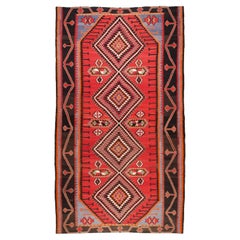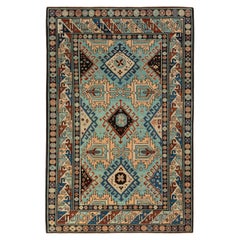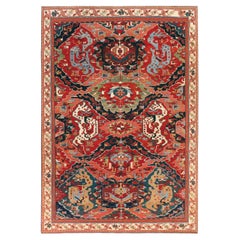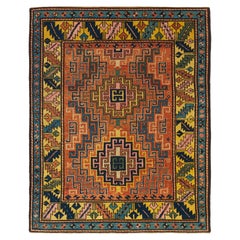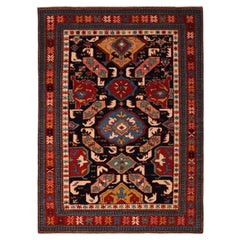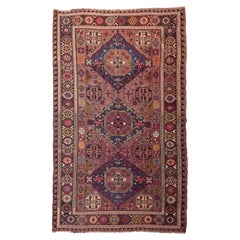Japan - Caucasian Rugs
Mid-20th Century Caucasian Kilim Japan - Caucasian Rugs
Natural Fiber, Wool
21st Century and Contemporary Caucasian Revival Japan - Caucasian Rugs
Wool, Natural Fiber, Organic Material
21st Century and Contemporary Turkish Revival Japan - Caucasian Rugs
Wool, Organic Material, Natural Fiber
21st Century and Contemporary Turkish Revival Japan - Caucasian Rugs
Wool, Natural Fiber, Organic Material
21st Century and Contemporary Turkish Revival Japan - Caucasian Rugs
Wool, Natural Fiber, Organic Material
Early 20th Century Caucasian Kilim Japan - Caucasian Rugs
Wool, Natural Fiber
Mid-20th Century Caucasian Kilim Japan - Caucasian Rugs
Wool, Natural Fiber
Early 20th Century Caucasian Oushak Japan - Caucasian Rugs
Wool, Natural Fiber
21st Century and Contemporary Turkish Revival Japan - Caucasian Rugs
Wool, Natural Fiber, Organic Material
21st Century and Contemporary Turkish Revival Japan - Caucasian Rugs
Wool, Natural Fiber, Organic Material
21st Century and Contemporary Turkish Revival Japan - Caucasian Rugs
Wool, Natural Fiber, Organic Material
21st Century and Contemporary Caucasian Oushak Japan - Caucasian Rugs
Wool, Natural Fiber, Organic Material
Late 19th Century Caucasian Kilim Antique Japan - Caucasian Rugs
Wool, Natural Fiber
21st Century and Contemporary Caucasian Revival Japan - Caucasian Rugs
Wool, Natural Fiber, Organic Material
Early 20th Century Caucasian Kilim Japan - Caucasian Rugs
Natural Fiber, Wool
21st Century and Contemporary Turkish Revival Japan - Caucasian Rugs
Wool, Natural Fiber, Organic Material
Mid-19th Century Caucasian Kilim Antique Japan - Caucasian Rugs
Wool, Natural Fiber
21st Century and Contemporary Turkish Revival Japan - Caucasian Rugs
Wool, Natural Fiber, Organic Material
21st Century and Contemporary Turkish Revival Japan - Caucasian Rugs
Wool, Natural Fiber, Organic Material
21st Century and Contemporary Turkish Revival Japan - Caucasian Rugs
Wool, Natural Fiber, Organic Material
21st Century and Contemporary Turkish Revival Japan - Caucasian Rugs
Wool, Natural Fiber, Organic Material
21st Century and Contemporary Turkish Revival Japan - Caucasian Rugs
Wool, Natural Fiber, Organic Material
Late 19th Century Caucasian Oushak Antique Japan - Caucasian Rugs
Wool, Natural Fiber, Organic Material
21st Century and Contemporary Turkish Revival Japan - Caucasian Rugs
Wool, Natural Fiber, Organic Material
21st Century and Contemporary Turkish Revival Japan - Caucasian Rugs
Wool, Natural Fiber, Organic Material
21st Century and Contemporary Turkish Revival Japan - Caucasian Rugs
Wool, Natural Fiber, Organic Material
21st Century and Contemporary Turkish Revival Japan - Caucasian Rugs
Wool, Natural Fiber, Organic Material
21st Century and Contemporary Turkish Revival Japan - Caucasian Rugs
Wool, Natural Fiber, Organic Material
21st Century and Contemporary Caucasian Revival Japan - Caucasian Rugs
Wool, Natural Fiber, Organic Material
Mid-20th Century Caucasian Kilim Japan - Caucasian Rugs
Natural Fiber, Wool
21st Century and Contemporary Turkish Revival Japan - Caucasian Rugs
Wool, Natural Fiber, Organic Material
21st Century and Contemporary Caucasian Revival Japan - Caucasian Rugs
Wool, Natural Fiber, Organic Material
21st Century and Contemporary Turkish Revival Japan - Caucasian Rugs
Wool, Natural Fiber, Organic Material
21st Century and Contemporary Turkish Revival Japan - Caucasian Rugs
Wool, Organic Material, Natural Fiber
Early 20th Century Caucasian Kilim Japan - Caucasian Rugs
Wool, Natural Fiber
21st Century and Contemporary Caucasian Revival Japan - Caucasian Rugs
Wool, Organic Material, Natural Fiber
21st Century and Contemporary Turkish Revival Japan - Caucasian Rugs
Wool, Natural Fiber, Organic Material
21st Century and Contemporary Turkish Revival Japan - Caucasian Rugs
Wool, Natural Fiber, Organic Material
Late 20th Century Caucasian Kilim Japan - Caucasian Rugs
Natural Fiber, Wool
21st Century and Contemporary Turkish Revival Japan - Caucasian Rugs
Wool, Natural Fiber, Organic Material
21st Century and Contemporary Turkish Revival Japan - Caucasian Rugs
Wool, Natural Fiber, Organic Material
21st Century and Contemporary Turkish Revival Japan - Caucasian Rugs
Wool, Natural Fiber, Organic Material
21st Century and Contemporary Turkish Revival Japan - Caucasian Rugs
Wool, Natural Fiber, Organic Material
21st Century and Contemporary Turkish Revival Japan - Caucasian Rugs
Wool, Natural Fiber, Organic Material
Late 19th Century Turkish Oushak Antique Japan - Caucasian Rugs
Wool, Natural Fiber, Organic Material
Mid-20th Century Caucasian Kilim Japan - Caucasian Rugs
Wool, Natural Fiber
21st Century and Contemporary Turkish Revival Japan - Caucasian Rugs
Wool, Natural Fiber, Organic Material
21st Century and Contemporary Turkish Revival Japan - Caucasian Rugs
Wool, Natural Fiber, Organic Material
21st Century and Contemporary Turkish Revival Japan - Caucasian Rugs
Wool, Natural Fiber, Organic Material
21st Century and Contemporary Turkish Revival Japan - Caucasian Rugs
Wool, Natural Fiber, Organic Material
21st Century and Contemporary Turkish Revival Japan - Caucasian Rugs
Wool, Natural Fiber, Organic Material
Early 20th Century Caucasian Kilim Japan - Caucasian Rugs
Wool, Natural Fiber, Organic Material
21st Century and Contemporary Turkish Revival Japan - Caucasian Rugs
Wool, Natural Fiber, Organic Material
21st Century and Contemporary Turkish Revival Japan - Caucasian Rugs
Wool, Natural Fiber, Organic Material
21st Century and Contemporary Turkish Revival Japan - Caucasian Rugs
Wool, Natural Fiber, Organic Material
21st Century and Contemporary Turkish Revival Japan - Caucasian Rugs
Wool, Natural Fiber, Organic Material
21st Century and Contemporary Turkish Revival Japan - Caucasian Rugs
Wool, Natural Fiber, Organic Material
21st Century and Contemporary Turkish Revival Japan - Caucasian Rugs
Wool, Natural Fiber, Organic Material
21st Century and Contemporary Turkish Revival Japan - Caucasian Rugs
Wool, Natural Fiber, Organic Material
21st Century and Contemporary Turkish Revival Japan - Caucasian Rugs
Wool, Natural Fiber, Organic Material
